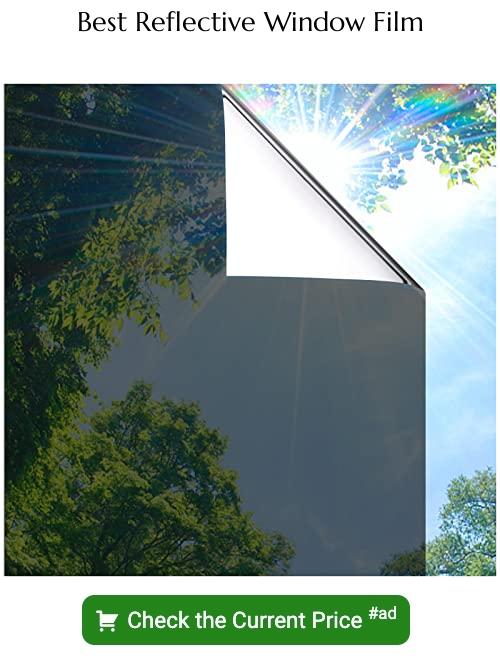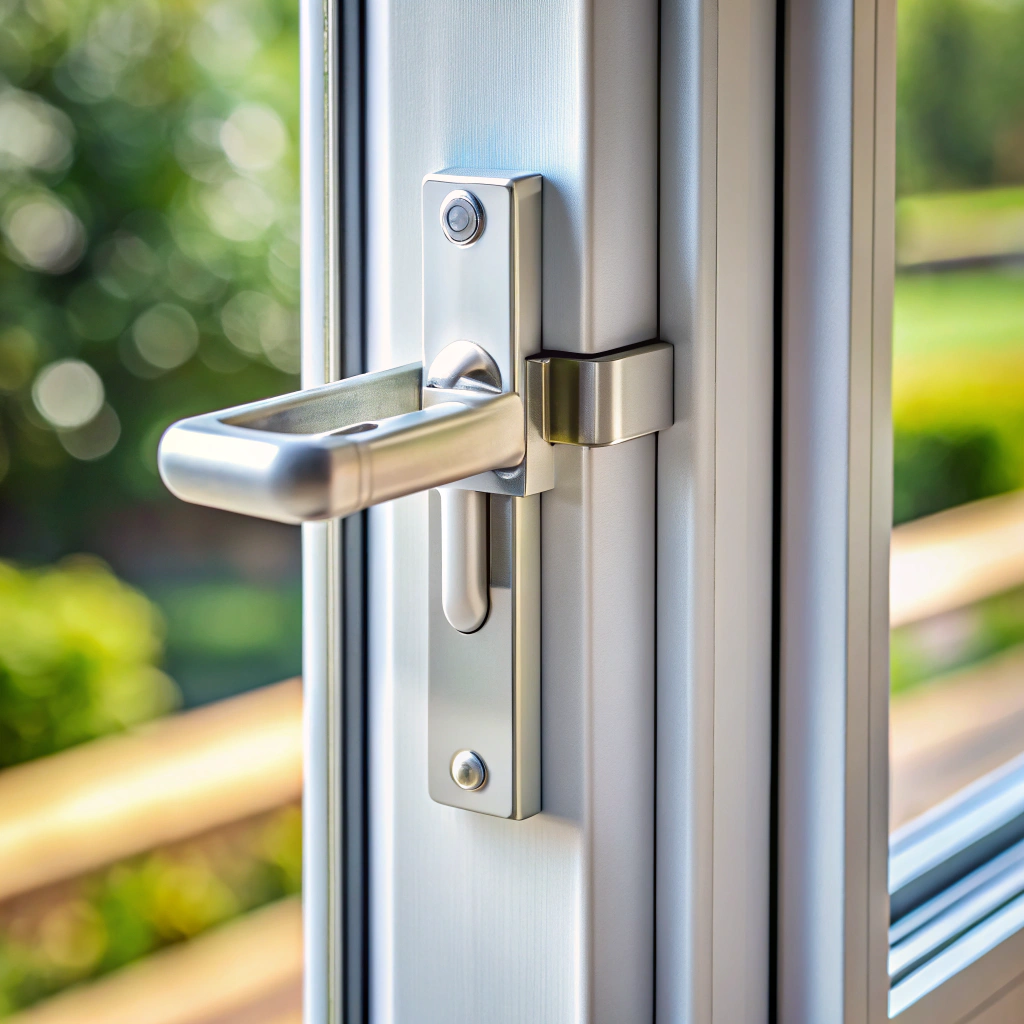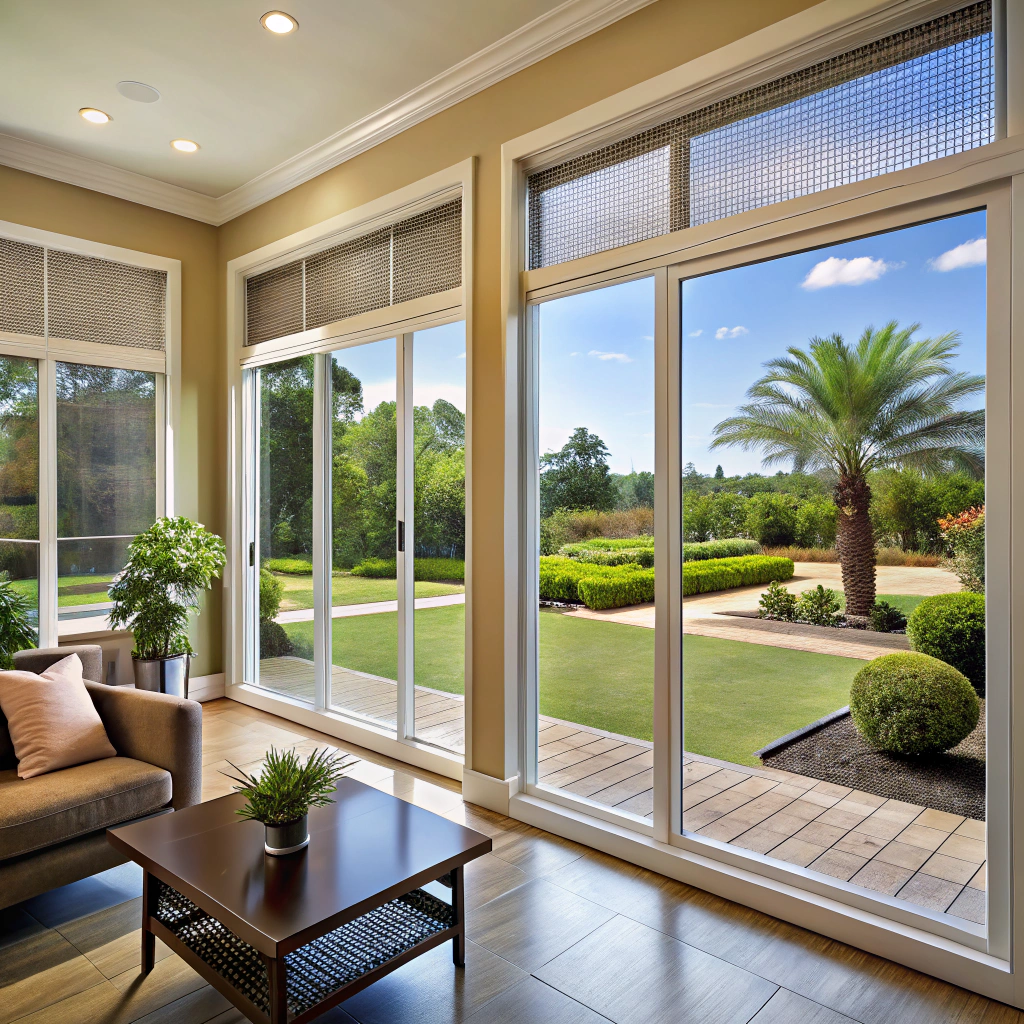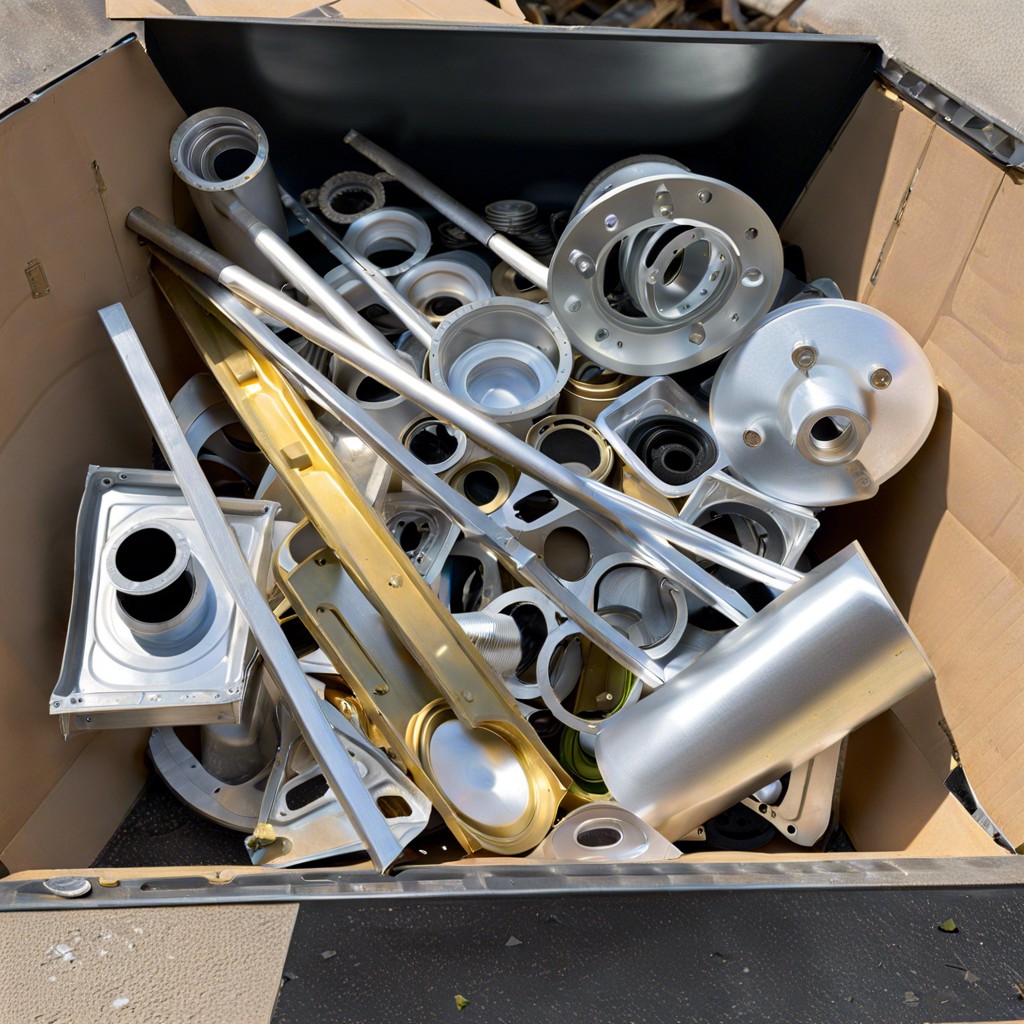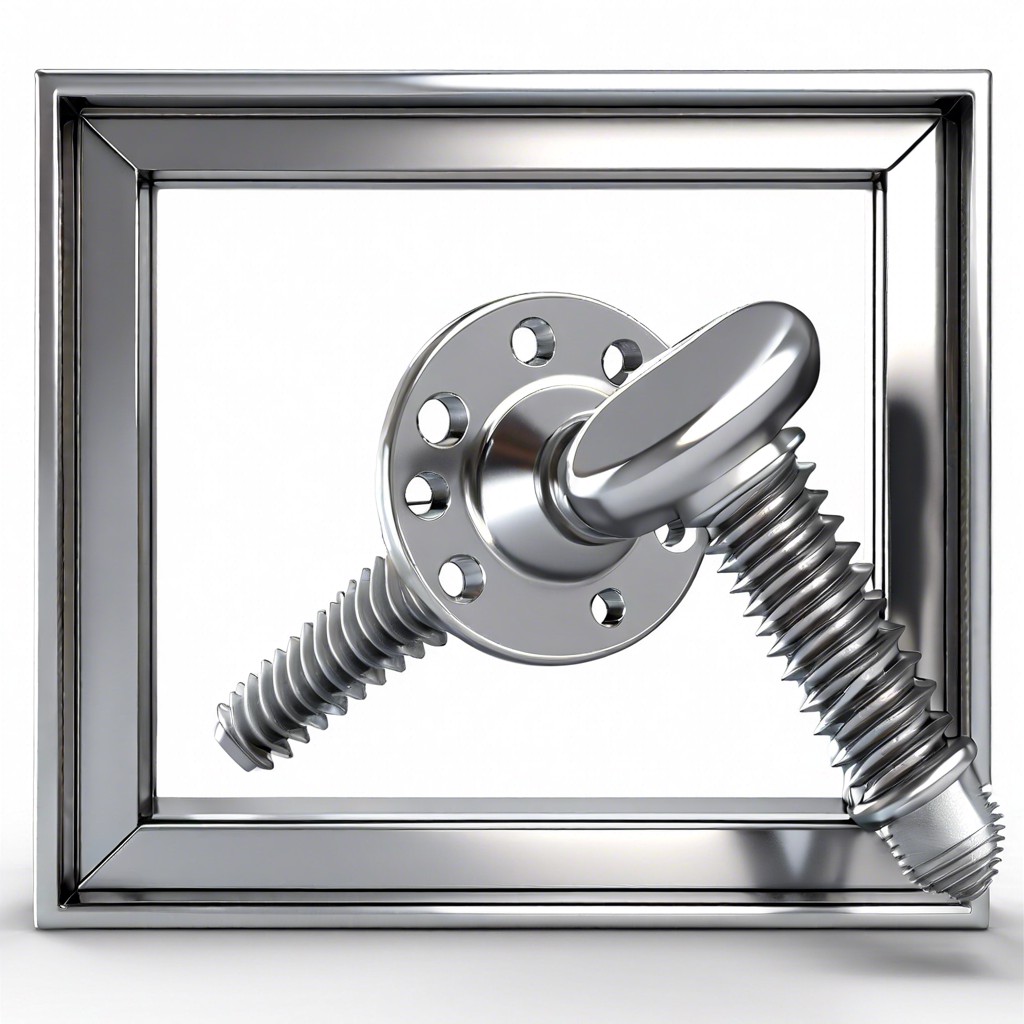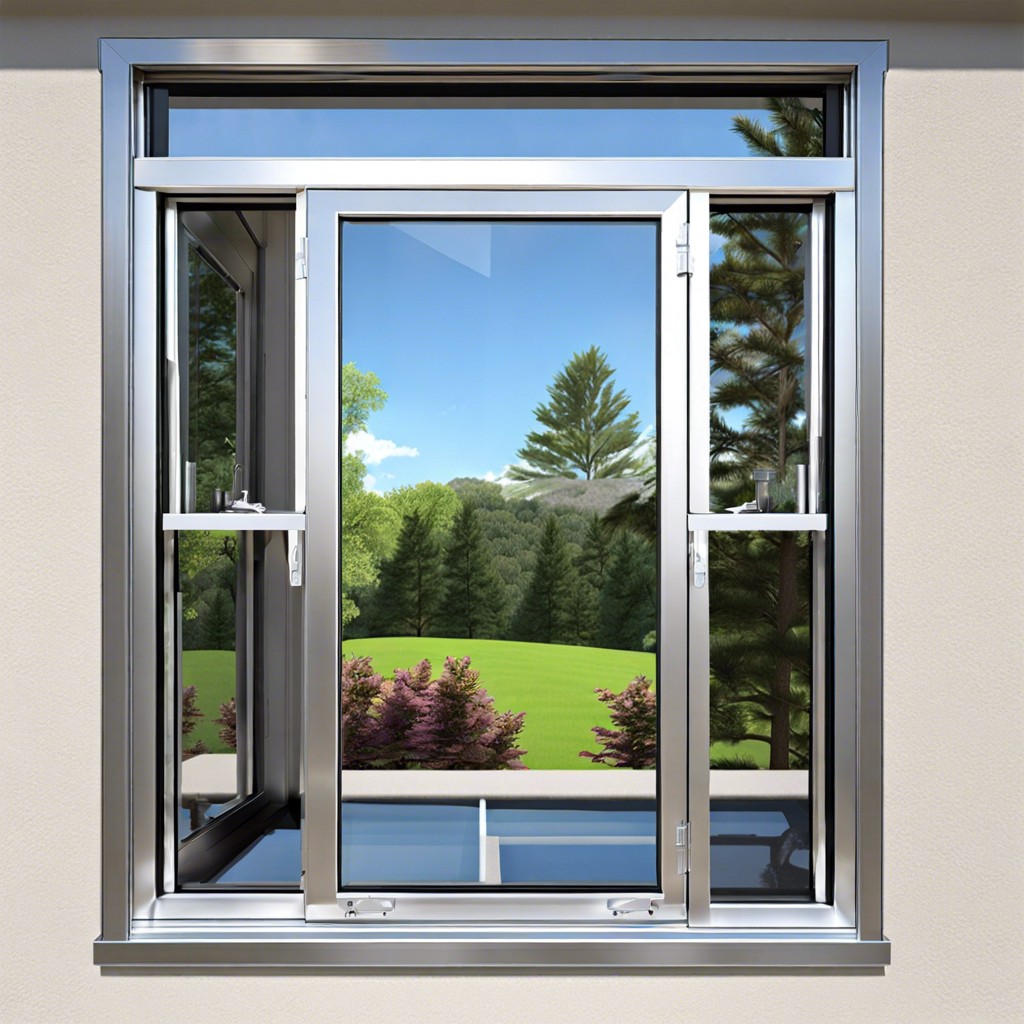This comprehensive guide will provide straightforward insights into the advantages, disadvantages, and processes involved in using aluminum foil as a window covering.
Key takeaways:
- Aluminum foil on windows reflects heat, improving insulation.
- It blocks light, ensuring privacy and darkness.
- Foil acts as a deterrent to electromagnetic interference.
- Easy upkeep, resists moisture, and can be wiped clean.
- Consider alternatives like reflective film or thermal drapes.
Benefits of Using Aluminum Foil On Windows
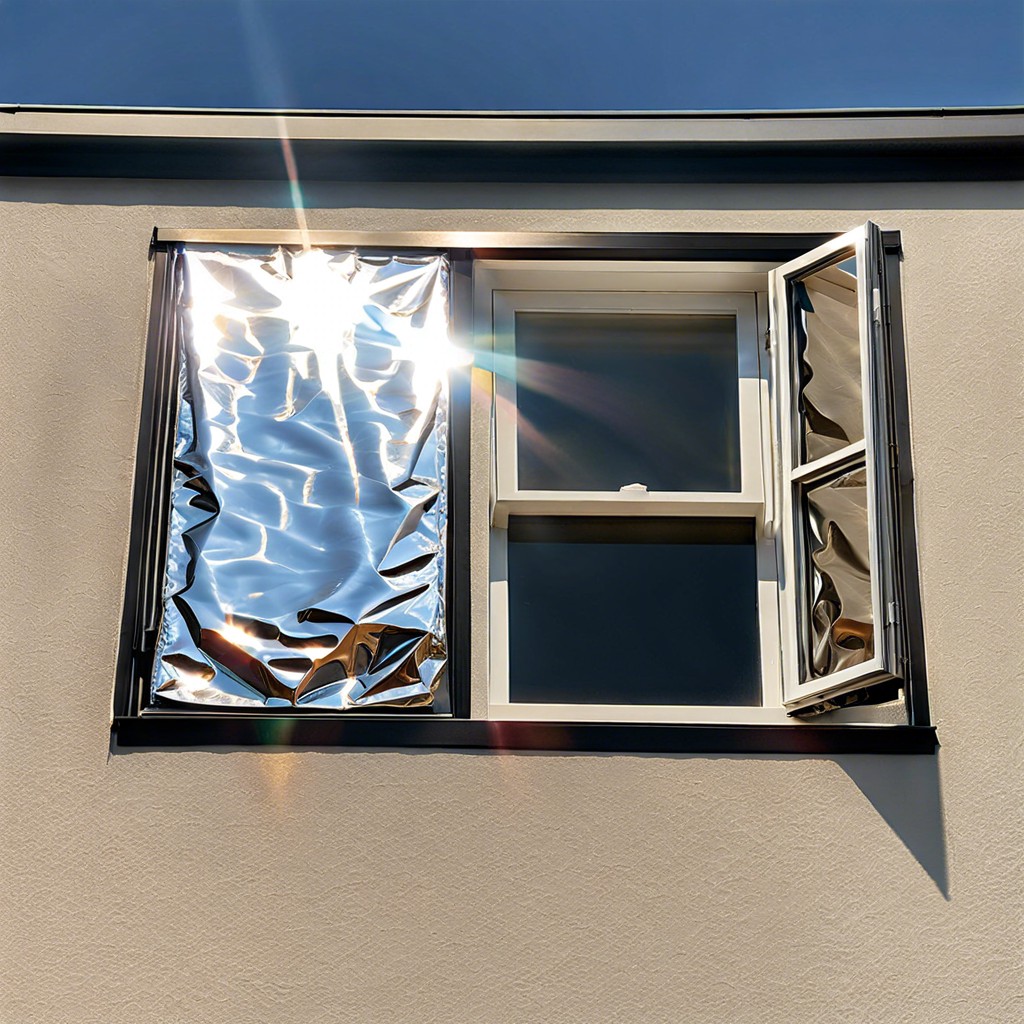
Aluminum foil, a kitchen staple, doubles as a cost-effective way to enhance home insulation. This metallic sheet reflects heat, maintaining a stable interior temperature—cool during summer and warm in winter.
With near-complete opacity, it effectively blocks out light, ensuring privacy and turning any room into a dark space ideal for shift workers or enhancing the home theater experience.
The material’s conductive nature also acts as a deterrent to electromagnetic interference, potentially improving indoor comfort for those sensitive to electronic devices’ output.
Moreover, minimal effort is required for upkeep, as it resists moisture and can be cleaned with a simple wipe-down, unlike traditional window treatments that may demand laundering or special maintenance.
Step-by-Step Guide On How to Apply Aluminum Foil to Windows
Begin by cleaning the window glass to ensure a smooth application; dust or dirt can hinder adhesive effectiveness.
Measure the window to cut a piece of aluminum foil slightly larger than the dimensions of the glass.
If the window is particularly large, make use of multiple foil sheets, overlapping them by about one inch to avoid gaps.
Use a low-tack adhesive, like painter’s tape or a light, even spray of adhesive glue, to prevent damage to your windows and walls.
Carefully press the foil against the glass, starting from the top and working your way down, to minimize air bubbles.
Ensure the foil is flat and smooth against the glass.
For a more permanent solution, consider adding a double-sided tape to the window frame before applying the foil.
Smooth out the surface with a straight edge, such as a ruler or credit card, to firmly secure the foil and eliminate any remaining air pockets.
Trim any excess foil with a sharp utility knife or scissors for a clean finish.
Remember, placement is reversible; peel off the foil gently should you decide to remove it.
Dispose of it responsibly, as aluminum foil is recyclable.
Energy Efficiency and Light Blocking Qualities of Aluminum Foil
Aluminum foil has reflective properties, bouncing back the sun’s rays, which helps maintain a cooler interior environment during hot weather. This reflection contributes to energy savings as it can reduce the need for air conditioning.
In winter, the foil creates an additional insulation layer, trapping heat inside. This reduces heating costs as the warm air is less likely to escape.
Its opaqueness guarantees an effective light-blocking solution, perfect for those requiring complete darkness for sleep or to protect interior furnishings from UV damage.
The material’s thinness makes it practically weightless, easing the burden on window fixtures while securing the benefits of heavier, traditional coverings.
Despite its many advantages, aluminum foil isn’t a permeable material, meaning it doesn’t allow for air flow or moisture passage, an aspect to consider for window areas requiring ventilation or prone to condensation.
Safety Considerations When Using Aluminum Foil On Windows
Ensure proper application to avoid damage to window surfaces. Misapplication can lead to adhesives hardening and potentially etching glass over time.
Consider possible signal interference. Aluminum foil can block signals for cell phones, Wi-Fi, and radio within the household.
Be aware of local fire codes. Foil can be a fire hazard if applied near heat sources or electrical outlets. Double-check that usage complies with regional safety regulations.
Recognize the potential for moisture buildup. If not sealed properly, foil coverings can trap moisture against the glass, leading to mold or water damage.
Monitor indoor temperatures during high heat. In extreme temperatures, the foil can increase interior heat, posing a health risk to occupants without adequate ventilation or air conditioning.
Regularly inspect the integrity of the foil. Over time, foil may tear or degrade, requiring replacement to maintain effectiveness and safety.
Alternatives to Aluminum Foil for Window Covering
Reflective window film offers a more aesthetically pleasing solution, with various shades and colors available that can complement your home’s design while still blocking UV rays and reducing heat gain.
Thermal drapes or blackout curtains are an effective alternative, as they provide insulation, light control, and privacy. They come in a variety of fabrics to match your interior decor.
Cellular shades, also known as honeycomb shades, trap air in distinct pockets, creating excellent insulation and can be a stylish option for temperature control.
Exterior solar screens can be installed on the outside of windows to reduce heat influx without affecting visibility and allowing natural light to enter the room.
Interior window inserts made of clear or translucent materials fit snugly into the window frame, offering an added barrier against the elements without permanent alteration to the window.
Window quilts operate similarly to thermal drapes but have a quilted appearance, enhancing insulation through their layered design.
Opt for adjustable window treatments such as plantation shutters or slatted blinds that allow you to control light and ventilation as needed.
FAQ
Why do people cover their windows with aluminum?
People often cover their windows with aluminum because it serves as a protective barrier and reflector against radiative heat from the outside, thus keeping the room cooler.
Does foil on windows help with heat in winter?
Yes, placing aluminum foil on windows can effectively help with retaining heat during winter, as it reflects back the heat inside the room rather than letting it escape through the windows.
Why do people put foil on their car windows?
People put foil on their car windows to reduce the interior temperature of parked cars by reflecting sunlight, and to shield passengers from direct UV rays.
What are the potential pitfalls of using aluminum foil as a temporary window cover?
Using aluminum foil as a temporary window cover can lead to overheating, damage to window frames due to adhesive, potential violation of housing codes, and decreased natural light.
Can aluminum foil actually enhance privacy in a room?
Yes, aluminum foil can enhance privacy in a room by blocking out light and visibility, but it lacks aesthetic appeal and may contravene housing rules or laws.
What are some alternative and cost-effective ways to insulate your windows aside from using aluminum foil?
Applying rubber weather sealing, using window insulation film, installing layered curtains or thermal blinds, and integrating draft snakes are some cost-effective alternatives to insulate your windows aside from using aluminum foil.
Recap
